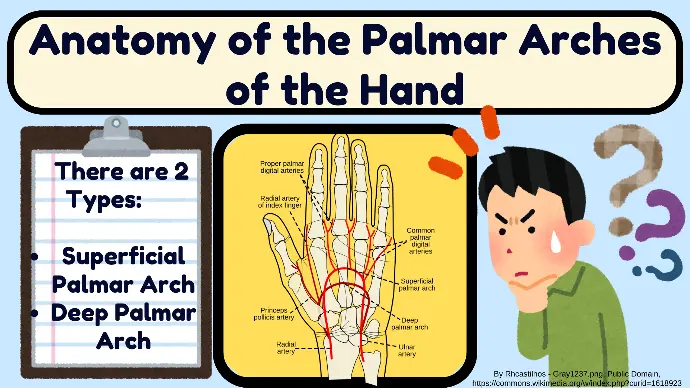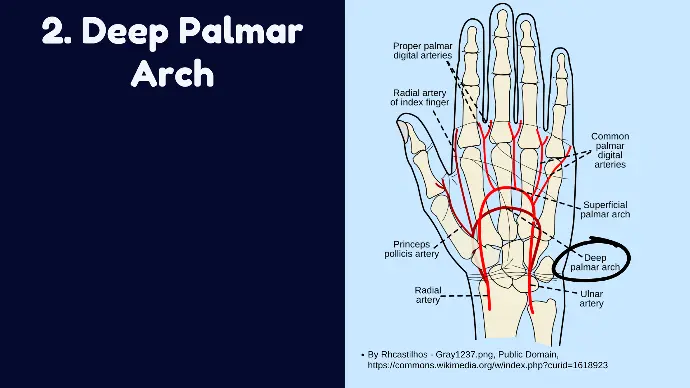Palmar Arches of the Hand
The palmar arches are crucial components of the hand's vascular system, consisting of the superficial and deep palmar arches.
There are two palmar arches of the hand:
1. Superficial Palmar Arch
2. Deep Palmar Arch

1. Superficial Palmer Arch
- Formation: The superficial palmar arch is primarily formed by the superficial palmar branch of ulnar artery, with a contribution on the lateral side, from the superficial palmar branch of the radial artery.
- Location: Situated just beneath the palmar aponeurosis and superficial to the flexor tendons.

Branches:
It gives 3 common digital branches and one proper digital branch.
These supply the medial 3 and a half fingers.
- Common Palmar Digital Arteries: Typically three arteries that travel distally between the metacarpal bones and bifurcate into proper palmar digital arteries.
- Proper Palmar Digital Arteries: Supply the adjacent sides of the fingers and run along their length to the distal phalanges.
2. Deep Palmer Arch
- Formation: The deep palmar arch is primarily formed by the radial artery, with a contribution on the medial side, from the deep palmar branch of the ulnar artery.
- Location: Located deep within the palm, beneath the long flexor tendons and the lumbrical muscles.

Branches:
- Palmar Metacarpal Arteries: Typically 3 arteries that supply medial 4 metacarpals, and join the common palmar digital arteries of the superficial palmar arch.
- Recurrent Branches: Supply blood to the carpals, wrist joint and deep muscles of the hand.
- Perforating Digital Branches: it gives 3 perforating arteries, that Pass dorsally through the interosseous spaces to anastomose with the dorsal metacarpal arteries.